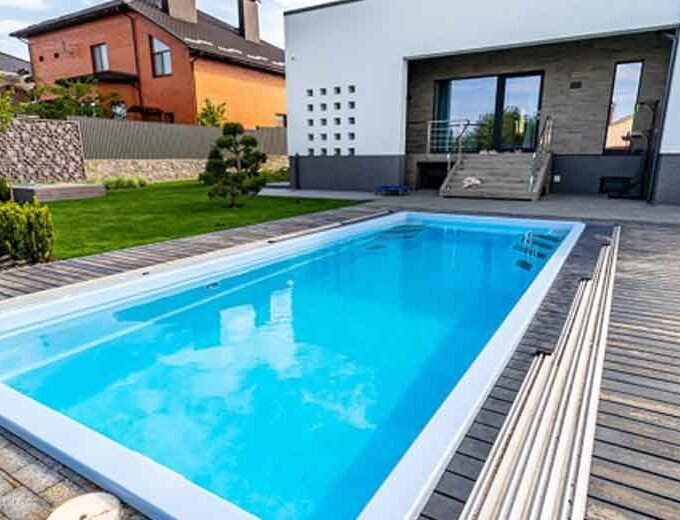Over the years, the concept of home has evolved beyond mere shelter, reflecting the changing lifestyles, values, and technologies of modern society. Today’s residential architecture trends are increasingly focused on sustainability, multifunctionality, and connectivity, reshaping how individuals design and experience their living spaces. Moreover, architects are prioritizing energy efficiency and eco-friendly materials to create environmentally conscious homes. Home designs are also becoming more adaptable, catering to diverse needs and activities within the same space. This shift is redefining the way people think about and interact with their living environments.
Sustainable and Eco-Friendly Design
One of the most significant trends in residential architecture is the emphasis on sustainability and eco-friendly design. Homeowners and architects alike are increasingly prioritizing green building practices to reduce environmental impact and improve energy efficiency. This trend is evident in the growing use of sustainable materials, such as reclaimed wood, bamboo, and recycled metal. These materials not only minimize resource depletion but also add a unique aesthetic to the home. Additionally, sustainable homes often incorporate energy-efficient technologies like solar panels and smart thermostats to enhance environmental responsibility. Energy-efficient technologies are also becoming standard in modern residential architecture. Solar panels, energy-efficient windows, and advanced insulation techniques help reduce a home’s carbon footprint while lowering utility bills. Furthermore, the integration of smart home systems allows for optimized energy consumption, further enhancing sustainability. Rainwater harvesting systems and green roofs are other popular features, contributing to water conservation and urban biodiversity. Homes are also being designed with geothermal heating and cooling systems, providing an even more efficient use of natural resources.
Open and Flexible Spaces
The way people use their homes has dramatically changed, and there is a greater need for adaptable spaces that can serve multiple functions. Open floor plans remain a popular trend, promoting a sense of spaciousness and facilitating better flow between different areas of the home. These layouts often combine the kitchen, dining, and living areas into a single, cohesive space, encouraging interaction and connectivity among family members. Flexible spaces can easily transition from workspaces to entertainment areas as needed. This adaptability is particularly beneficial for accommodating remote work and virtual learning environments. In addition to open floor plans, there is a growing demand for flexible spaces that can be easily reconfigured. Movable walls, multipurpose furniture, and convertible rooms allow homeowners to adapt their living spaces to their evolving needs. This flexibility is particularly valuable in urban settings, where space is often limited, and every square foot must be utilized. Customizable storage solutions help maximize functionality without sacrificing aesthetics. Many homes now feature sliding doors and fold-away furniture to create multifunctional spaces.
Connection to the Outdoors
Connecting indoor and outdoor living spaces is a trend that continues to gain momentum. Large windows, sliding glass doors, and indoor gardens blur the boundaries between the inside and the outside, creating a seamless transition. This design approach enhances the aesthetic appeal of a home while promoting natural light and ventilation, contributing to a healthier living environment. Outdoor living areas, such as patios and decks, extend the usable space of the home. Incorporating elements like water features further enhances the functionality and enjoyment of these areas. Outdoor living spaces, such as patios, decks, and rooftop gardens, are becoming important components of modern homes. These areas provide additional living space for relaxation, entertainment, and even gardening. Features like outdoor kitchens, fire pits, and comfortable seating areas encourage outdoor living year-round. Pergolas and shaded areas help protect against the elements, making outdoor spaces usable in various weather conditions. Incorporating landscaping and greenery enhances the ambiance and privacy of these outdoor areas.
Smart Home Technology
The integration of smart home technology is revolutionizing residential architecture. These advanced systems offer unprecedented control over various aspects of the home, enhancing convenience, security, and energy efficiency. From voice-activated assistants and automated lighting to smart thermostats and security cameras, technology is seamlessly woven into the fabric of modern homes. One of the key benefits of smart home technology is its ability to create a personalized living experience. Homeowners can customize settings to suit their preferences, from lighting and temperature to entertainment systems. This level of control enhances comfort and contributes to a more efficient and sustainable home environment.
Minimalist and Functional Aesthetics
Minimalism continues to influence residential architecture, with an emphasis on simplicity, functionality, and clean lines. This design philosophy is characterized by uncluttered spaces, neutral color palettes, and a focus on essential elements. The goal is to create a serene and harmonious living environment that promotes relaxation and mindfulness. Functional aesthetics are also gaining popularity, where every design element serves a practical purpose. Built-in storage solutions, hidden appliances, and streamlined furniture help maximize space and reduce visual clutter. This approach is particularly beneficial in smaller homes, where efficient use of space is crucial.
Personalized and Custom Designs
While trends offer inspiration, there is a growing emphasis on personalization and customization in residential architecture. Homeowners are increasingly involved in the design process, working closely with architects to create spaces that reflect their unique tastes and lifestyles. Custom designs allow for greater flexibility and creativity, resulting in truly one-of-a-kind homes. For example, Colorado residential architects and those in other areas often incorporate elements that reflect the region’s natural beauty and cultural heritage. This localized approach to design ensures homes not only meet the practical needs of their occupants but also resonate with the surrounding environment and community.
Conclusion
The evolving trends in residential architecture reflect a broader shift towards sustainable living, technological integration, and personalized design. As individuals continue to redefine what it means to create a home, these trends offer valuable insights and inspiration for those embarking on the journey of designing their dream home. The focus on eco-friendly materials and energy efficiency highlights a growing commitment to environmental responsibility. This holistic approach to home design ensures future living spaces will be adaptable, innovative, and sustainable. By embracing sustainable practices, flexible spaces, outdoor connectivity, smart technology, minimalist aesthetics, and personalized touches, homeowners can craft living spaces that are not only functional and beautiful but also deeply meaningful and aligned with their values and lifestyles.
















